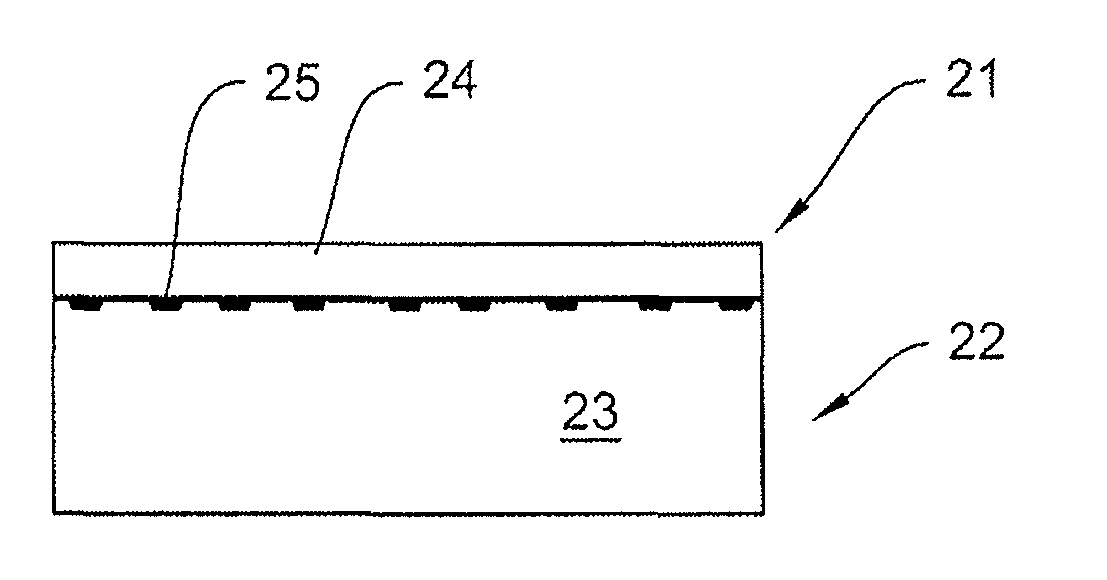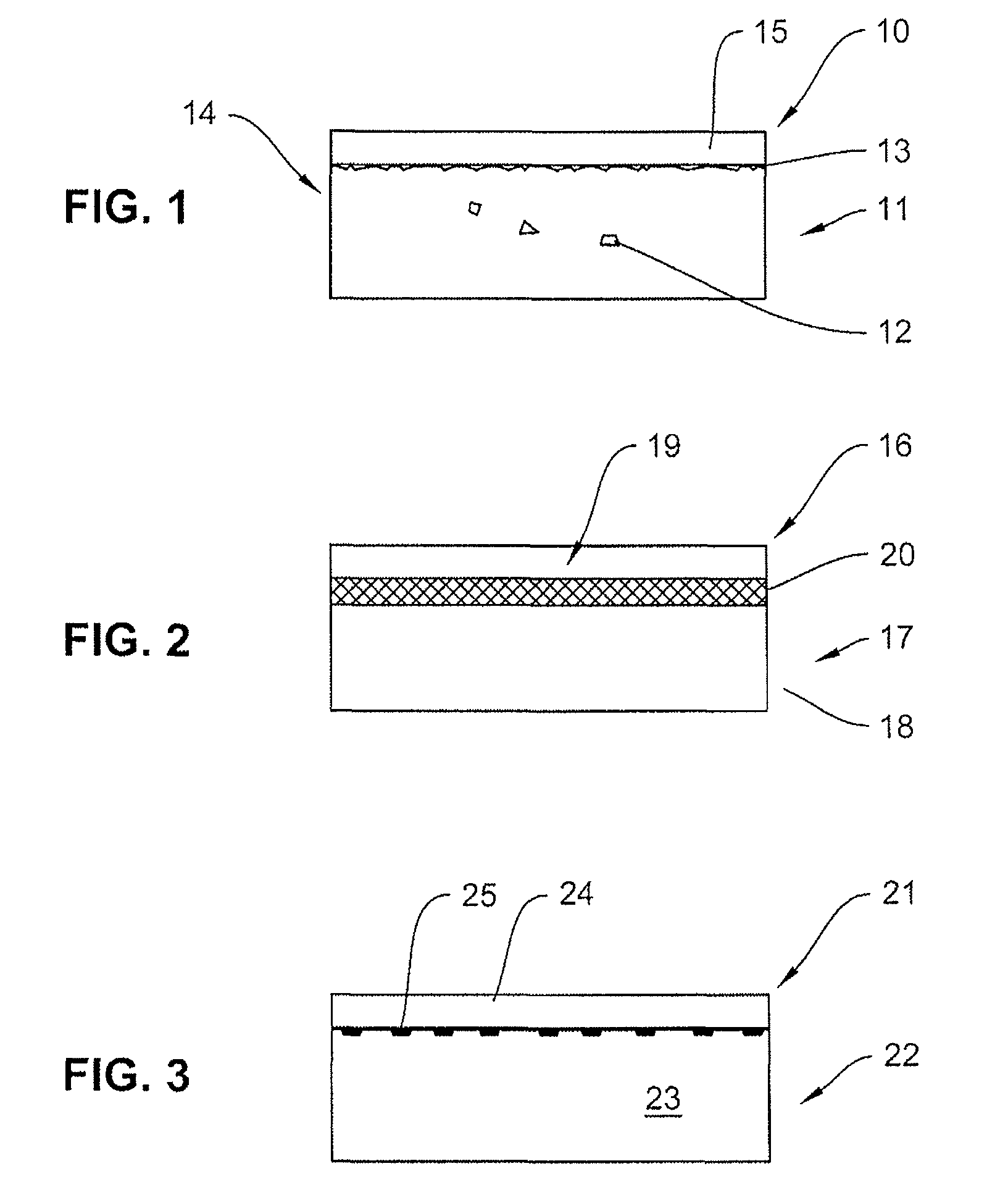Electrode for electrolysis
a technology of electrolysis and electrodes, applied in the field of electrolysis electrodes, can solve the problems of reduced lifetime, complete destruction of electrodes, and thermal alternating load on electrodes, and achieve the effect of increasing lifetime and high reliability during operation
- Summary
- Abstract
- Description
- Claims
- Application Information
AI Technical Summary
Benefits of technology
Problems solved by technology
Method used
Image
Examples
Embodiment Construction
[0026]FIG. 1 shows an electrode 10 comprising an electrode substrate 11 which is formed from a glassy carbon having a defined porosity. In a preferred embodiment, the glassy carbon of the electrode substrate 11 has pores 12 with a maximum pore size or a maximum pore diameter of about 12 μm. In the electrode 10 shown in FIG. 1 a contact layer 13 is formed between a base body 14 of the electrode substrate 11 and a coating 15 from a polished surface of the electrode substrate 11 in such a manner that as a consequence of the polishing process, pores are smoothed in the area of the surface or at least partially filled by a carbon abrasion produced during the polishing process. As a result, a surface roughness Ra of the surface of the electrode substrate 11 is obtained, which is smaller than the size of the pores 12.
[0027]FIG. 2 shows an electrode 16 comprising an electrode substrate 17 with a base body 18 of a carbon material, in particular graphite, wherein the base body has a density o...
PUM
| Property | Measurement | Unit |
|---|---|---|
| Thickness | aaaaa | aaaaa |
| Thickness | aaaaa | aaaaa |
| Thickness | aaaaa | aaaaa |
Abstract
Description
Claims
Application Information
 Login to View More
Login to View More - R&D
- Intellectual Property
- Life Sciences
- Materials
- Tech Scout
- Unparalleled Data Quality
- Higher Quality Content
- 60% Fewer Hallucinations
Browse by: Latest US Patents, China's latest patents, Technical Efficacy Thesaurus, Application Domain, Technology Topic, Popular Technical Reports.
© 2025 PatSnap. All rights reserved.Legal|Privacy policy|Modern Slavery Act Transparency Statement|Sitemap|About US| Contact US: help@patsnap.com


